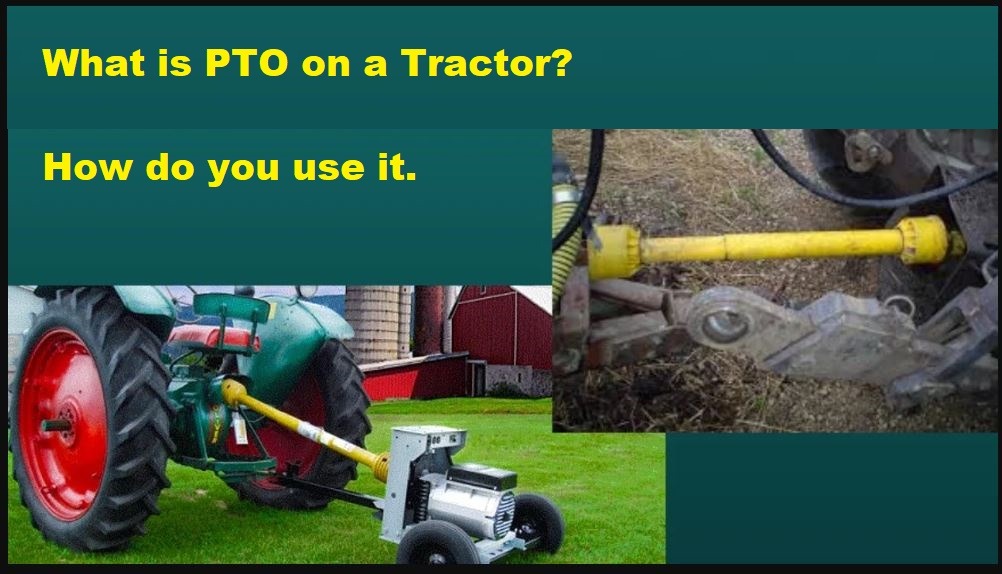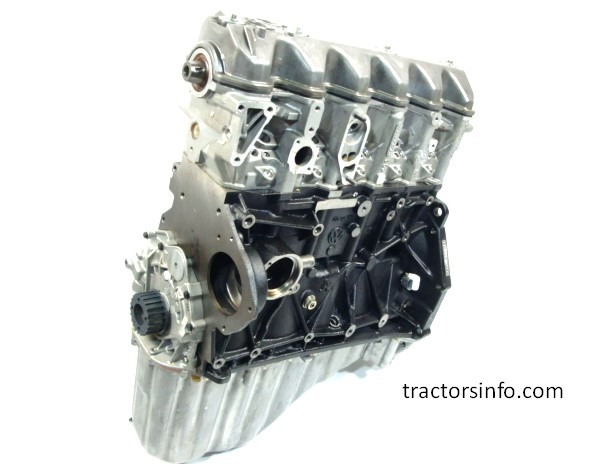What is PTO on a Tractor? How do you use it?
What is PTO on a Tractor?
Tractors are used not only to pull implements used in tillage and for sowing different crops but also to power stationary and moving equipment used for operations like threshing crops, pumping out water from tube wells, spraying, and other operations.
Tractors are equipped with a power outlet at the back. Power Take Off is the name of the power outlet. PTO was introduced in 1918 by the International Harvester Company.
In India, PTOs are usually on the rear, but developed countries offer a front PTO to power front-mounted attachments.
The gearbox is the source of power for the PTO shaft. The PTO is normally connected to the countershaft of a gearbox.
It is essential to standardize the speed of PTO so that equipment can be built around it. The threshers, for example, are designed to run at the peripheral speed of the threshing barrel. The pulley arrangement is made keeping in mind the standard PTO speeds.
Before 1958, the standard PTO speed was 536 rpm. This speed was changed to 540 rpm, and another standard speed was added, i.e. 1000 rpm.
The splines on the PTO shaft are also different to avoid accidental attachment. The shaft of the 540 rpm has six splines, while the 1000 rpm is fitted with 21 splines. Dual PTO is a PTO that can operate at both 540 and 1000 rpm.
PTO (power take-off) is a mechanism on a tractor that transfers power from the tractor’s engine to an external device.
The power take-off is typically located on the back of the tractor and is connected to the implement by a drive shaft.
The PTO can be used to power a variety of implements, including:
- Balers
- Hay mowers
- Snowblowers
- Grain drills
- Pumps
- Saws
The PTO can be operated at 540 rpm and 1000 rpm. The 540 rpm speed is generally used, while the 1000 rpm speed is used for more demanding applications.
How to Use a PTO on a Tractor
To use a PTO on a tractor, you will need to:
- Engage the PTO clutch. This is usually done with a foot pedal or a lever.
- Connect the drive shaft to the implement.
- Start the implementation.
- Adjust the speed of the PTO (power take-off) to match the speed of the implement.
- Disengage the PTO clutch when you are completed using it.
Safety Precautions
There are a few safety protection that you should take when using a PTO on a tractor:
- Always wear gloves and long sleeves when working with a PTO.
- Never let your clothing get caught in the PTO shaft.
- Keep animals and children away from the PTO.
- Never engage the PTO when the implement is not connected.
- Clear the PTO before getting off the tractor.
Conclusion
The PTO is a versatile tool that can be used to power a variety of implements. You can use the PTO (power take-off) safely and effectively by following the safety precautions.
FAQs
What is the difference between a 540 rpm PTO and a 1000 rpm PTO?
The 540 rpm PTO is the most common type of PTO. It is used for most applications, such as hay mowers, balers, and grain drills. The 1000 rpm PTO is used for more demanding applications, such as pumps and saws.
How do I know which type of PTO my tractor has?
If you are unsure, check the owner’s manual of your tractor. Consult your tractor’s owner’s manual if you’re not sure.
How do I change the speed of the PTO?
You can change the speed of your PTO by moving the PTO control lever. Usually, the lever is located near the driver’s seat.
What is a PTO slip clutch?
A PTO slip clutch is a safety device that stops the PTO from over-revving. It does this by slipping when the PTO is overloaded.
How can I prevent a malfunctioning PTO?
You can prevent a malfunctioning PTO by:
- Regularly servicing your PTO.
- Using the correct oil and grease in your PTO.
- Avoid overloading your PTO.
- Keep your PTO clean and free of debris.
What should I do if my PTO malfunctions?
Stop using your tractor immediately if the PTO fails. Has it been serviced? It would help if you did not try to fix your PTO.
What are the dangers of a malfunctioning PTO?
A malfunctioning PTO can be dangerous. It can cause the PTO shaft to spin out of control, injuring or killing people or damaging property.
What are the signs of a bad PTO?
The signs of a bad PTO can include:
- The PTO is making strange noises.
- The PTO is overheating.
- The PTO shaft is not spinning smoothly.
- The PTO clutch is slipping.
How often should I service my PTO?
The frequency of PTO service will differ depending on the type of PTO and the amount of use it gets. However, having your PTO serviced at least once a year is a good idea.
How do I know if my PTO slip clutch is working properly?
When the PTO is not overloaded, the slip clutch should disengage smoothly. Replace the PTO slip-clutch if it is not functioning properly.

![Chsadvancedlearning ❤️ CHS Advanced Learning Login [2024]](https://tractorsinfo.com/wp-content/uploads/2021/03/CHS-Advanced-Learning-Login-portal.jpg)



